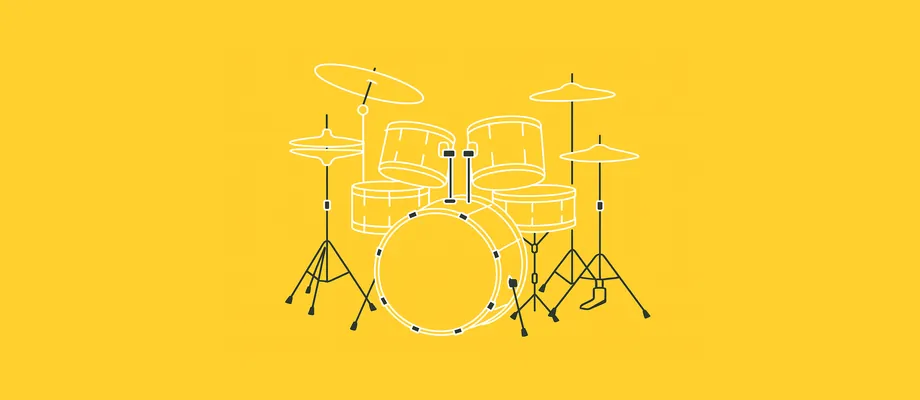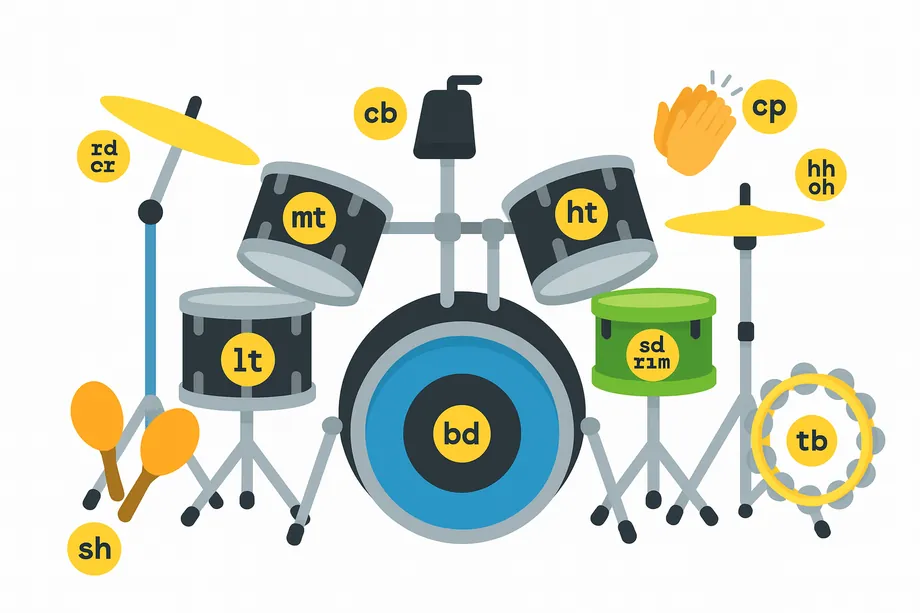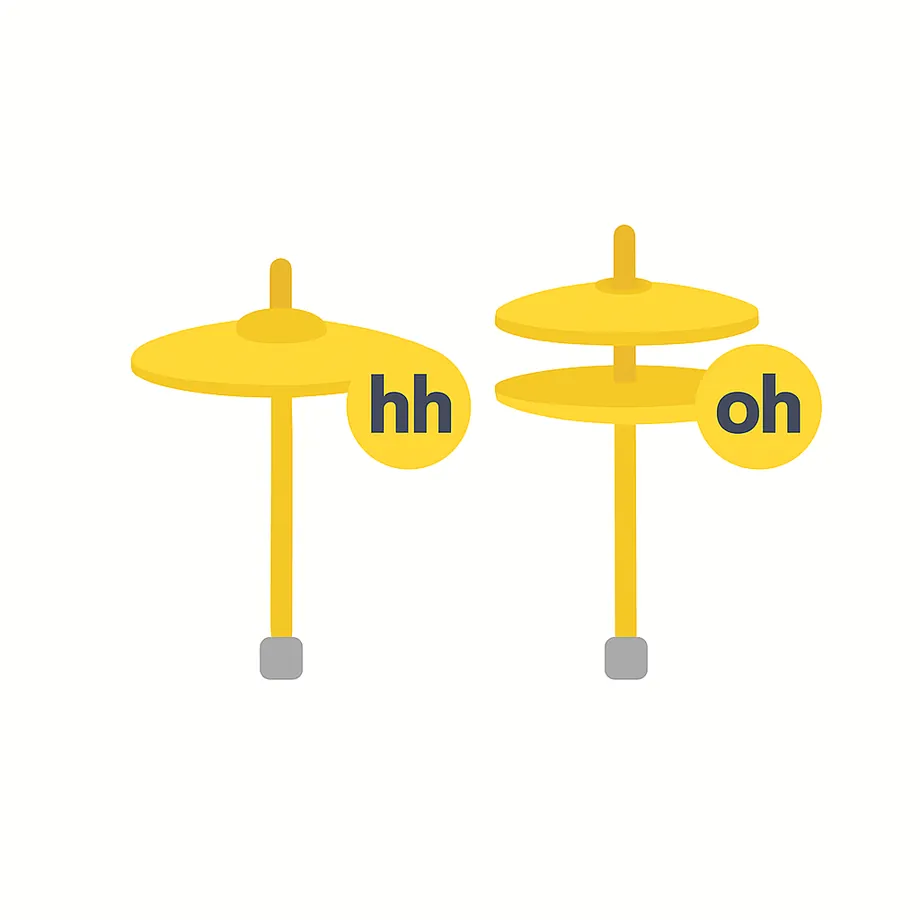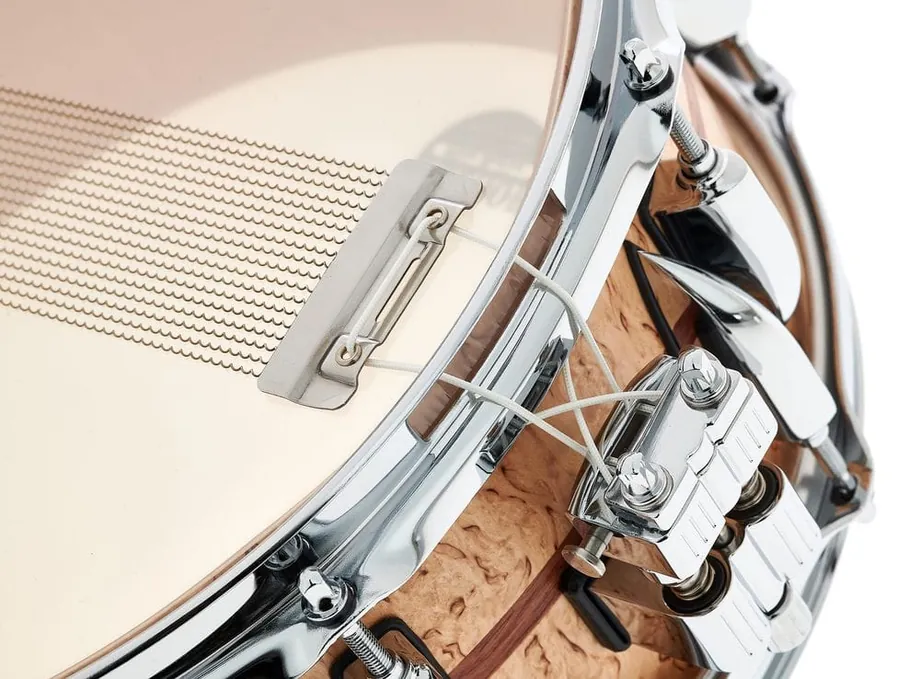
The Backbeat
So far, we have placed the sounds right at the beginning of the beats. This is great for creating stability. However, the magic of many musical styles lies in the offbeat. The offbeat is playing notes in the spaces between the beats.
In the next example, we will play a normal measure and then one with a kick drum on the offbeat so you can notice the difference.
Measure 1: Steady Rhythm
This is our base rhythm, with all hits falling directly on the beats. It’s solid and easy to follow.
Measure 2: Adding offbeat
Now listen carefully to the second measure or cycle. The first kick falls on beat 1, as usual, but on the second kick [- bd], we have divided the beat into 2 and shifted the hit to the right, after the start of the beat. It falls halfway towards beat 4. This is an offbeat hit.
Do you feel how that second kick adds tension to the rhythm? It’s not stable, it’s not predictable. Your body craves to return to the base pulse, to the kick aligned with the pulse.
Reggaeton (Dembow)
A famous example of offbeat rhythm is the "tumpa-tumpa" of Reggaetón. This rhythm has a constant kick and a offbeat snare. (We will soon see what setcpm means, it's just to change the speed)
Here is a real example of this rhythm that we find in almost any Reggaeton song.
Iconic Beats You Should Know
Let's take a look at some rhythms that have marked the history of music.
We Will Rock You (Queen)
This is one of the most recognizable beats in history. Simple but powerful.
In Strudel we would write it like this:
Do you want it to look more like the original? Use the cp sound (clap - palm).
In addition to the basic drum, Strudel includes many more percussion sounds. Here are some examples:

bd = bass drum (kick)
sd = snare drum (snare)
rim = rimshot (rimshot)
hh = hi-hat (hi-hat)
oh = open hi-hat (open hi-hat)
oh means open hi-hat. It simply means that the hi-hat, when we play it, is open instead of being closed and produces a different sound.

rd = ride cymbal (ride cymbal) A large cymbal, unlike the hi-hat, it is a single cymbal.
cr = crash cymbal (crash cymbal) A medium cymbal.
sh = shaker
cb = cowbell
tb = tambourine
cp = clap
Additional drum kit toms:
lt = low tom
mt = middle tom
ht = high tom
Toms are similar to the snare, but produce round tones, without the "crack" of the snare, as they do not have its snares.

The snares are tight metal wires placed under the snare drum, which vibrate when struck and produce a metallic, sizzling sound.
The floor tom produces lower tones than the mid and high.
Tempo: Controlling the Speed
BPM
BPM stands for Beats Per Minute. It is the standard way to measure the speed of a song. It's like measuring your heartbeats: you can say your heart beat 90 times in a minute, and in the same way, you can say your song has 90 beats per minute, 90 BPM.
The more you increase the beats per minute, the faster your song will sound.
BPM in Strudel
However, Strudel does not work directly with BPM. Instead, Strudel uses CPM cycles per minute. Since we use 4 beats per cycle, you just divide by 4. So to convert BPM to CPM, we use this formula:
setcpm(BPM / beats_per_cycle)
Therefore, for a song at 90 BPM, we write setcpm(90/4).
There is another way to indicate the speed in Strudel CPS (cycles per second).
setcps(1) means that there is 1 cycle per second and therefore each beat (if we have 4 notes) will last 0.25 seconds (1/4 = 0.25).
If you wanted your kick drum to sound once per second, you should write setcps(0.25). This means that in 1 second there is a quarter of a cycle, which is one beat in our case.
More Iconic Beats
The drum set is a relatively new instrument. Mozart did not compose anything for drums because they did not exist yet. The drum set emerged less than 150 years ago out of the need for a single person to play multiple instruments at the same time. It all started with the idea of a bass drum pedal, which allowed the foot to play it and thus free the hands to use another instrument.
To put into practice everything you've learned, here are more classic rhythms you can explore:
Classic Rock
A variation of the basic rhythm that gives a bit more drive to the kick drum.
Classic House
The hypnotic rhythm of House music has three key elements:
- A kick on every beat ("four-on-the-floor")
- A clap on the weak beats
- An open hi-hat on the offbeat
Listen to the following song for the hi-hat on the offbeat, notice how it seems to always lag behind the beat (or behind the kick).
There is something else we haven't seen so far, bank("RolandTR909"). We will cover this in the next lesson 👉>>
